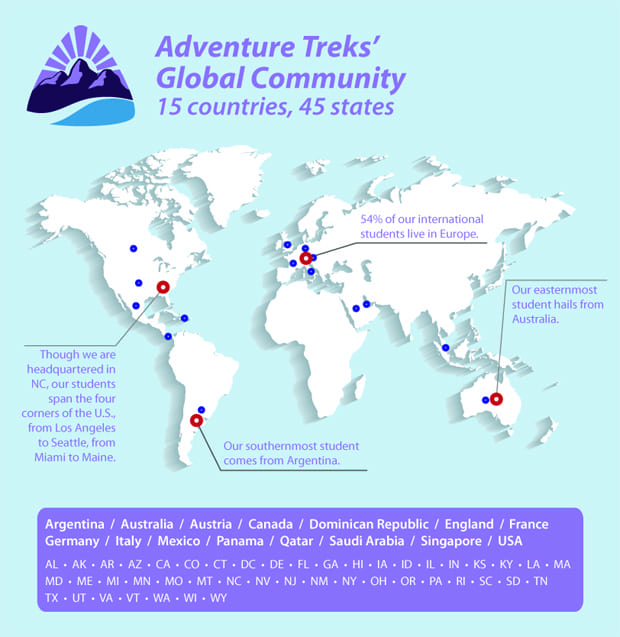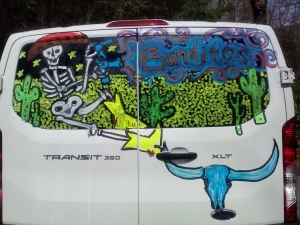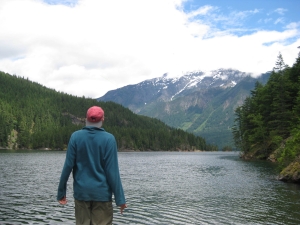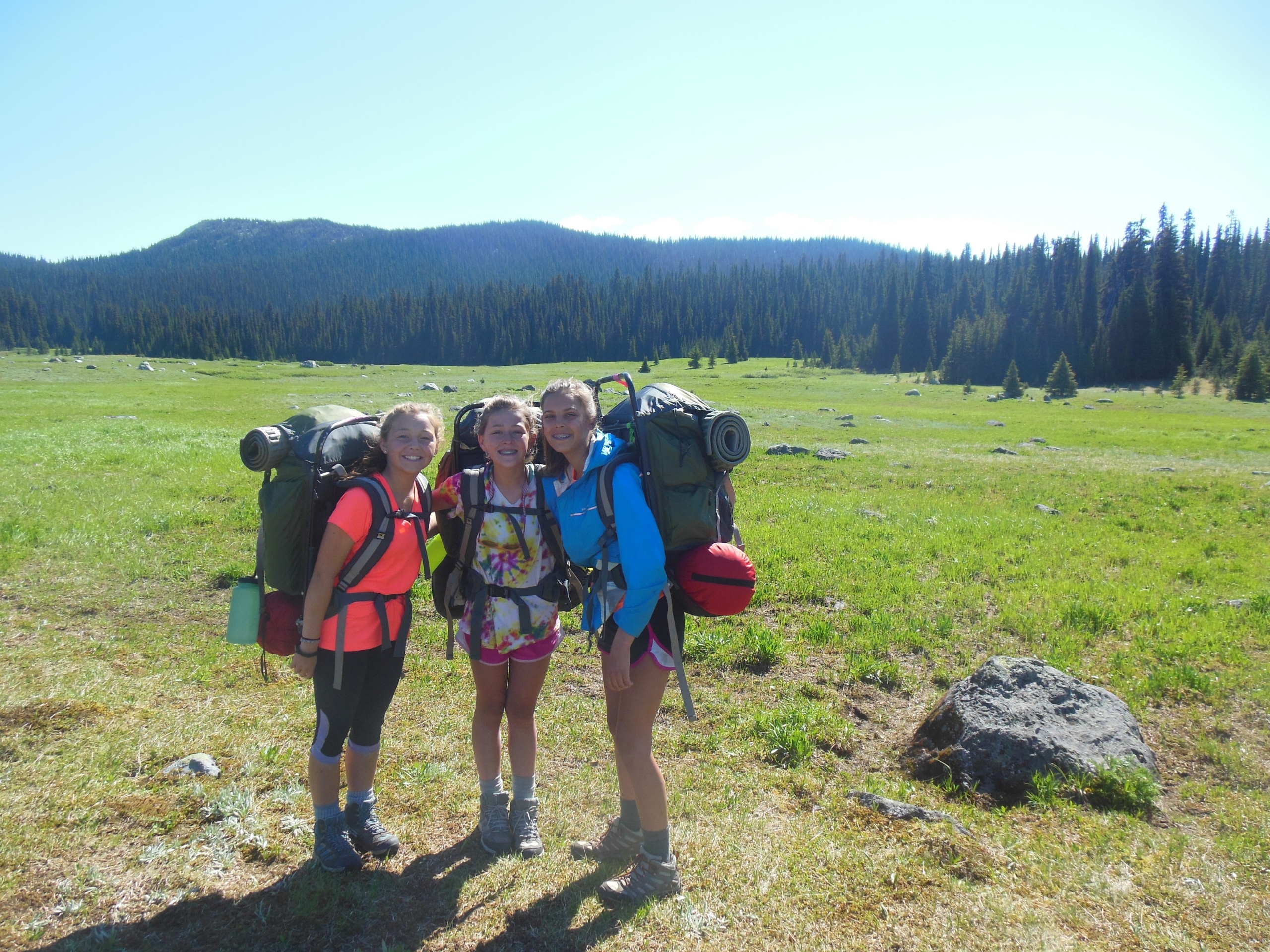Our trips are well under way from California to Alaska to Colorado, from the Pacific Northwest to the Blue Ridge. Adventure Treks students are challenging themselves with new activities in incredible settings while making wonderful new friends. Despite all of the fun, we also want this to be a learning and growing experience. The substance of our program begins with instructor orientation and we thought we would give you a glimpse of a small part of our two-week school for instructors!
The Method behind the Magic – AT Instructor Orientation 2015 from Adventure Treks on Vimeo.
From fall to spring, our directors work tirelessly to find the most committed and experienced role models for Adventure Treks. And each year, our team gets stronger and better.
During our two-week-long, intensive staff orientation this year, our instructor team created a powerful, inclusive community—which they are currently modeling and passing onto our fantastic students. During orientation, the instructors spent seven days training in southern Washington, discussing the big picture of what makes Adventure Treks so fun and transformative. We applied recent trends in youth development to an outdoor environment, focusing on a growth mindset and 21st century skills. We refreshed our medical skills, talked about risk management, spent an intensive day on van-driving training, and exchanged ways to develop the kind, inclusive communities that is the hallmark of Adventure Treks.
We also played a lot of games! If our instructors are having fun, so are our students! And there is actually research to back the impact games can have from a group development standpoint. There was also a lot of gear to sort at orientation. This spring, one of our trip leaders, Joe, spent two months organizing gear in our warehouse so that it could be sorted and distributed on site. Imagine:
- 21 brand-new 2015 Ford Transit vans
- 13 trailers
- 376 sleeping bags
- 377 sleeping pads
- 320 Deuter and Osprey backpacks
- 170 Big Agnes tents
- 170 MSR stoves
- 75 first aid kits
- 70 cases of fuel
- 27 van boxes
- 27 van first aid kits
- And much much more… We haven’t even talked about food yet! (But we do have 2,500 Honey Stinger Waffles!)
Instructors arrived on June 9, though our trip leaders and directors attended a Leadership Retreat which began on June 3. On Monday, June 15, we left southern Washington and split off into our five or six-person staff teams and headed to our trip destinations. In the second week of staff training, our teams pored over their trip itineraries and mastered all the tiny details that ensure our trips will be exceptional. We continued to build our small staff communities, scouted trail heads, practiced our driving, refreshed backcountry camping and hiking skills, planned our food shopping and meals, and studied our student and parent questionnaires and health histories to prepare for our students’ arrival.
Now that our students are here, all of the hard work and training has paid off and we are ecstatic about the wonderful students that are having great experiences out in the Adventure Treks world!

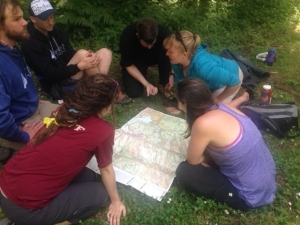
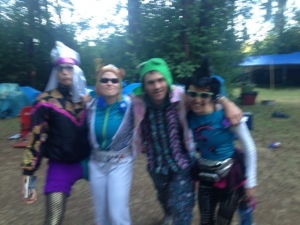

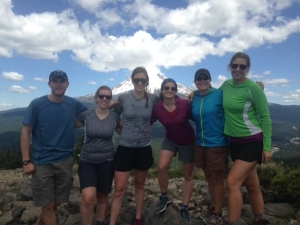
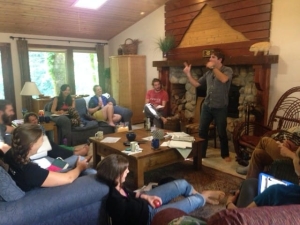



 In Mindset, Stanford researcher Carol Dweck explains why it’s not just our abilities and talent that bring us success, but whether we approach challenges with a fixed or a growth mindset. Praising intelligence and ability isn’t the best way to foster self-efficacy and confidence, and may instead actually jeopardize success. Instead, understanding that the brain is malleable, and that we are all works in progress, leads to the development of a growth mindset. By encouraging and rewarding effort and hard work over innate talent, we can better motivate our kids to more eagerly approach new challenges while building resilience. We use Dweck’s book in instructor orientation to show staff how to encourage our students to develop a mindset focused on continuous growth rather than accepting our talents and abilities as fixed.
In Mindset, Stanford researcher Carol Dweck explains why it’s not just our abilities and talent that bring us success, but whether we approach challenges with a fixed or a growth mindset. Praising intelligence and ability isn’t the best way to foster self-efficacy and confidence, and may instead actually jeopardize success. Instead, understanding that the brain is malleable, and that we are all works in progress, leads to the development of a growth mindset. By encouraging and rewarding effort and hard work over innate talent, we can better motivate our kids to more eagerly approach new challenges while building resilience. We use Dweck’s book in instructor orientation to show staff how to encourage our students to develop a mindset focused on continuous growth rather than accepting our talents and abilities as fixed. Harvard professor Edward Hallowell gives us a
Harvard professor Edward Hallowell gives us a One of the Wall Street Journal’s “most important reads for 2013,” The Big Disconnect: Protecting Child and Family Relationships in the Digital Age discusses how technology is affecting family relationships and how parents’ involvement with technology at home affects family connections. Renowned clinical psychologist and author Catherine Steiner-Adair explains that families are now in crisis around this issue. Not only do chronic technology distractions have deep and lasting effects, but children desperately need warm interactions with the adults in their lives.
One of the Wall Street Journal’s “most important reads for 2013,” The Big Disconnect: Protecting Child and Family Relationships in the Digital Age discusses how technology is affecting family relationships and how parents’ involvement with technology at home affects family connections. Renowned clinical psychologist and author Catherine Steiner-Adair explains that families are now in crisis around this issue. Not only do chronic technology distractions have deep and lasting effects, but children desperately need warm interactions with the adults in their lives.